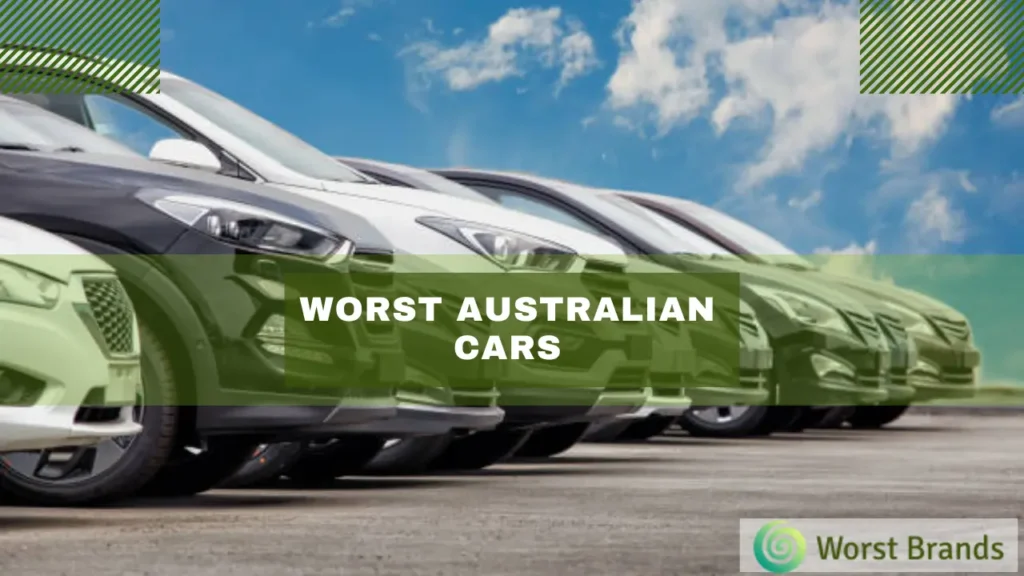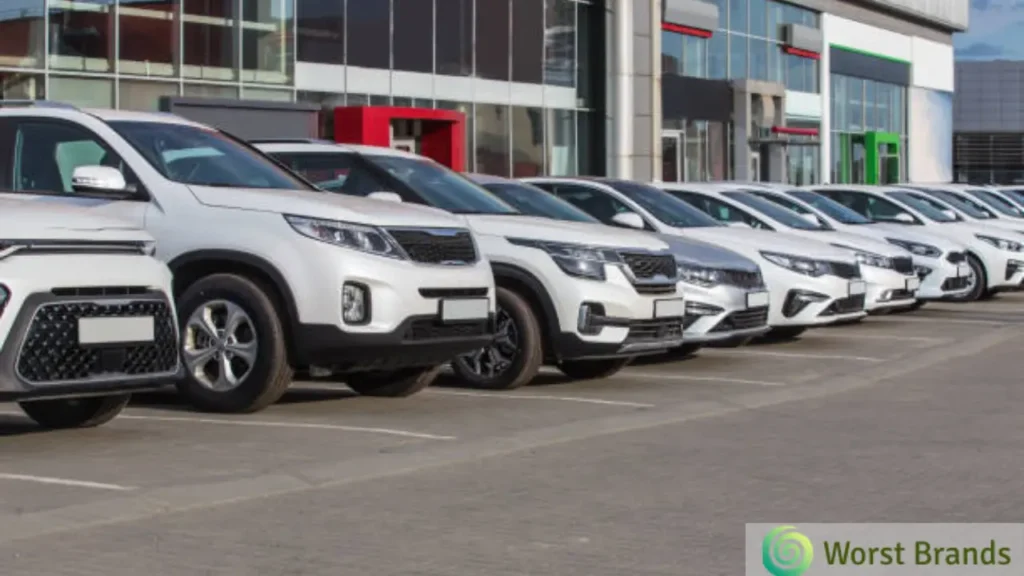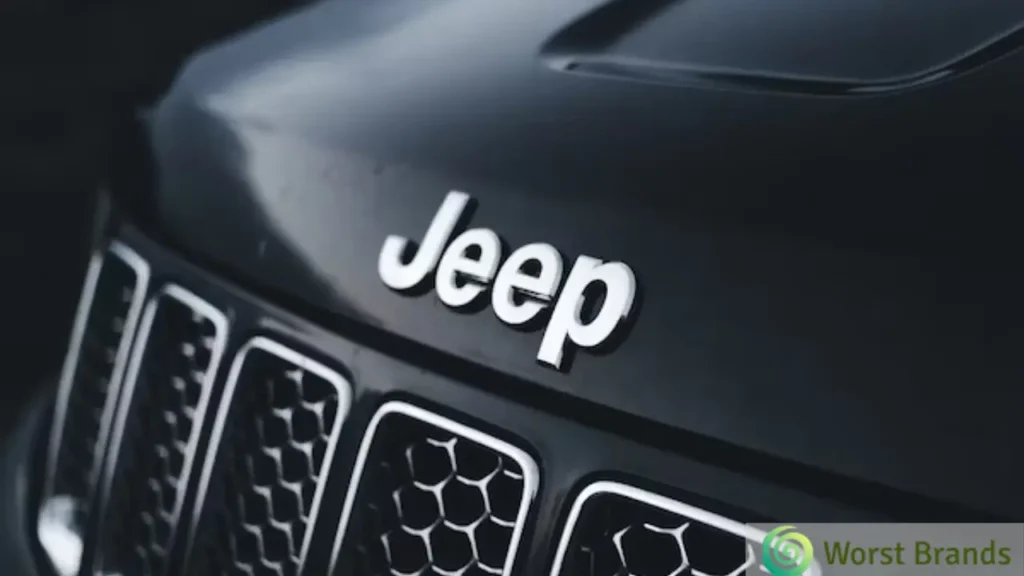Australia’s automotive landscape is as diverse as it is intriguing, filled with tales of innovation and missteps.
As a car enthusiast, I’ve seen quite a few bad vehicle models that have performed really badly in Australian conditions.
These models aren’t just historical footnotes; they taught us what happens when ambition doesn’t align with execution.
From design blunders to mechanical malfunctions, the worst Australian cars include the Ford Falcon XK, Datsun 120Y, Leyland P76, Lightburn Zeta, HSC Avalance, and others.
Table of Contents
Worst Australian Cars to Avoid
Join us as we delve into these infamous models, uncovering the reasons behind their bad reputation.

1. Ford Falcon XK
Ford is a giant American car brand. The Ford Falcon XK, launched in the 1960s, was an ambitious attempt by Ford Australia to introduce an American-style vehicle to the local market.
However, the XK’s design was ill-suited to Australian roads, leading to notorious front suspension failures. This flaw almost brought down Ford’s Australian venture in its infancy.
Although subsequent models rectified these issues, the Falcon XK’s initial failure had a lasting impact, marking it as one of the bad Australian automobiles for reliability.
2. Ford Falcon AU
The Ford Falcon AU’s story is one of visual missteps overshadowing mechanical soundness.
Its design, particularly the grille and the disproportionately small wheels, deviated too far from the beloved Falcon aesthetic.
This off-putting exterior led to a sharp decline in consumer interest, driving potential buyers to competitors.
Ford’s rapid response with several renovations attempted to rectify these issues, but the damage to the AU’s reputation was irreversible.
Its place in history as one of the ugliest Australian cars is a testament to the critical role of design in the automotive industry.
3. Datsun 120Y
The Datsun 120Y is a classic example of a good concept poorly executed.
Initially intended to extend the success of Datsun’s small cars of the 1970s, the 120Y failed to meet expectations.
It was plagued by subpar driving dynamics, a lack of power, and build quality issues that led to rapid rusting and interior wear.
These shortcomings positioned the 120Y prominently among the Australian cars to avoid, highlighting the critical importance of maintaining quality and performance standards.

Similar Blog: 8 Worst French Cars – Wierd Vehicles of All Time
4. Leyland P76
Designed specifically for Australia, the Leyland P76 ironically became notorious for its lack of reliability and poor construction.
The P76 was known for its self-destructive tendencies and a problematic exhaust system.
Its failure highlights the significance of quality control and suitability in automotive design.
Because of these shortcomings, the P76 is ranked among the worst cars made in Australia.
5. Lightburn Zeta
Originating from a company better known for household appliances, its bizarre design choices marked the Lightburn Zeta’s entry into the car market.
Although the optional all-alloy V-8 engine option was commendable, there were too many drawbacks.
Featuring a fuel tank dangerously positioned in the driver’s lap and lacking a conventional reverse gear, the Zeta’s design flaws rendered it one of the worst Australian cars ever sold.
6. HSV Avalanche
Holden’s HSV Avalanche, a derivative of the Adventra, was a venture into the SUV market that missed the mark.
Criticized for its heavy build, compromised design, and a surprising decrease in power, it stands as an example of the challenges in adapting to SUV trends.
This model, intended to counter the Ford Territory, became renowned for its engineering limitations.
7. Jeep WK2 Grand Cherokee

While the Jeep WK2 Grand Cherokee earned accolades for its aesthetics and off-road capability, it was unfortunately dogged by a series of reliability issues.
The problems were not minor; they included a malfunctioning integrated power module and frequent transmission failures.
These issues inconvenienced owners and posed serious questions about the overall reliability of vehicles marketed in Australia.
The Grand Cherokee’s struggles with dependability remind automotive manufacturers to prioritize consistent quality and reliability to meet consumer expectations.
Conclusion
Even the best intentions can lead to some of the worst outcomes.
Each car we’ve discussed, from the ill-fated Falcon XK to the problematic Grand Cherokee, is a compelling chapter in the story of the worst Australian cars.
These aren’t just cautionary tales but powerful lessons in aligning design with practicality and reliability.
If you are in Australia and going for your next car purchase, let these stories guide you to making more informed choices on the road ahead.
Christopher Evans is a Mechanical Engineer and is a distinguished expert in tire and electronic appliance testing with over 15 years of experience. Holding certifications like Automotive Tire Service (TIA) and Certified Appliance Professional (CAP). He is also a member of the the American Society of Mechanical Engineers (ASME) and has significantly contributed to safety standards and testing protocols in both industries. Evans is a respected speaker and award recipient.
